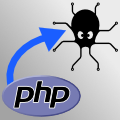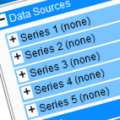Web page, Yocto-Visualization, and actuators (continued)
![]() Three weeks ago, we showed you how to integrate code on a web page that manages Yoctopuce actuators while using Yocto-Visualization (for web). But there was one limitation: we couldn't use the DeviceArrival and DeviceRemoval callbacks because they were already used by Yocto-Visualization (for web), so the code was a bit rickety when it came to checking whether the actuators concerned were connected or not. As this was a bit of a problem for us, we've slightly improved Yocto-Visualization (for web)...
Three weeks ago, we showed you how to integrate code on a web page that manages Yoctopuce actuators while using Yocto-Visualization (for web). But there was one limitation: we couldn't use the DeviceArrival and DeviceRemoval callbacks because they were already used by Yocto-Visualization (for web), so the code was a bit rickety when it came to checking whether the actuators concerned were connected or not. As this was a bit of a problem for us, we've slightly improved Yocto-Visualization (for web)...
| No comment yet | Read more... |
Web page, Yocto-Visualization, and actuators
![]() One of the limitations of Yocto-Visualization is that only sensors are supported. But what if you want to monitor an experiment driven by Yoctopuce actuators and to have the result displayed with Yocto-Visualization without having to run several applications at the same time? Some time ago, we described how to integrate your own web page into Yocto-Visualization (for web). So why not simply create a web page that drives Yoctopuce actuators and then integrate it into Yocto-Visualization (for web). If you know how to code in JavaScript, it looks pretty trivial. Except that it's more subtle than it sounds.
One of the limitations of Yocto-Visualization is that only sensors are supported. But what if you want to monitor an experiment driven by Yoctopuce actuators and to have the result displayed with Yocto-Visualization without having to run several applications at the same time? Some time ago, we described how to integrate your own web page into Yocto-Visualization (for web). So why not simply create a web page that drives Yoctopuce actuators and then integrate it into Yocto-Visualization (for web). If you know how to code in JavaScript, it looks pretty trivial. Except that it's more subtle than it sounds.
| No comment yet | Read more... |
HTTP callback + VirtualHub for Web
 This week, we'll be talking about our PHP library, HTTP callbacks, and VirtualHub for Web. In particular, how to use the three together.
This week, we'll be talking about our PHP library, HTTP callbacks, and VirtualHub for Web. In particular, how to use the three together.
| No comment yet | Read more... |
Using TLS/SSL with our command line 2.0 library
 We're continuing to add SSL/TLS support to our libraries. This week, it's the turn of the command line library, which is upgraded to v2.0 for the occasion.
We're continuing to add SSL/TLS support to our libraries. This week, it's the turn of the command line library, which is upgraded to v2.0 for the occasion.
| No comment yet | Read more... |
Adding series in Yocto-Visualization (for web)
 As with the native version, one of the limitations of Yocto-Visualization (for web) is the maximum number of series that each graph can display, that is four. But, as with the native version, it is possible to increase this limit, at the cost of a small code modification. However, for the web version, the process of obtaining executable code is a little more complicated than pressing F6 in VisualStudio. Hence this week's post.
As with the native version, one of the limitations of Yocto-Visualization (for web) is the maximum number of series that each graph can display, that is four. But, as with the native version, it is possible to increase this limit, at the cost of a small code modification. However, for the web version, the process of obtaining executable code is a little more complicated than pressing F6 in VisualStudio. Hence this week's post.
| No comment yet | Read more... |


